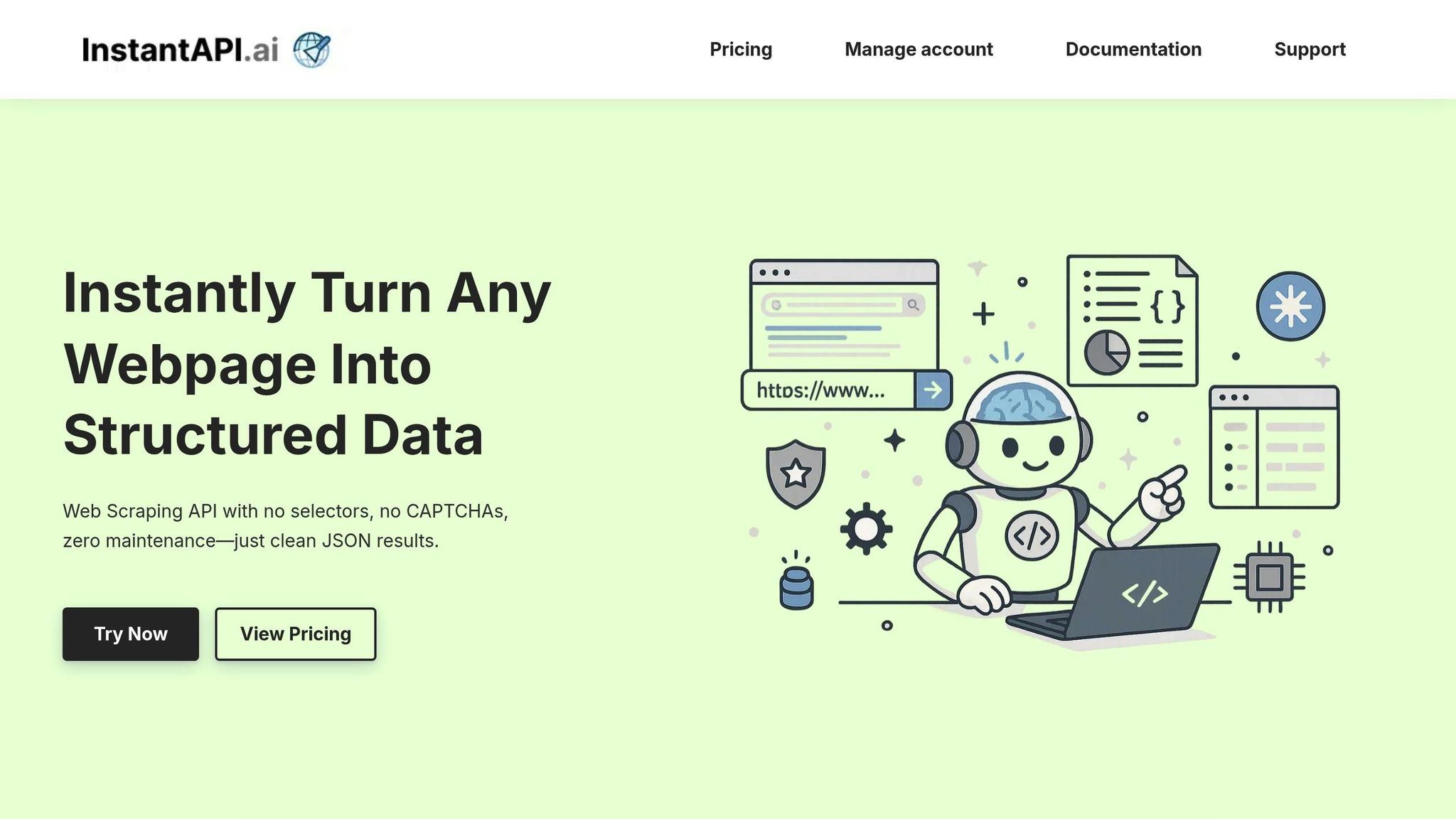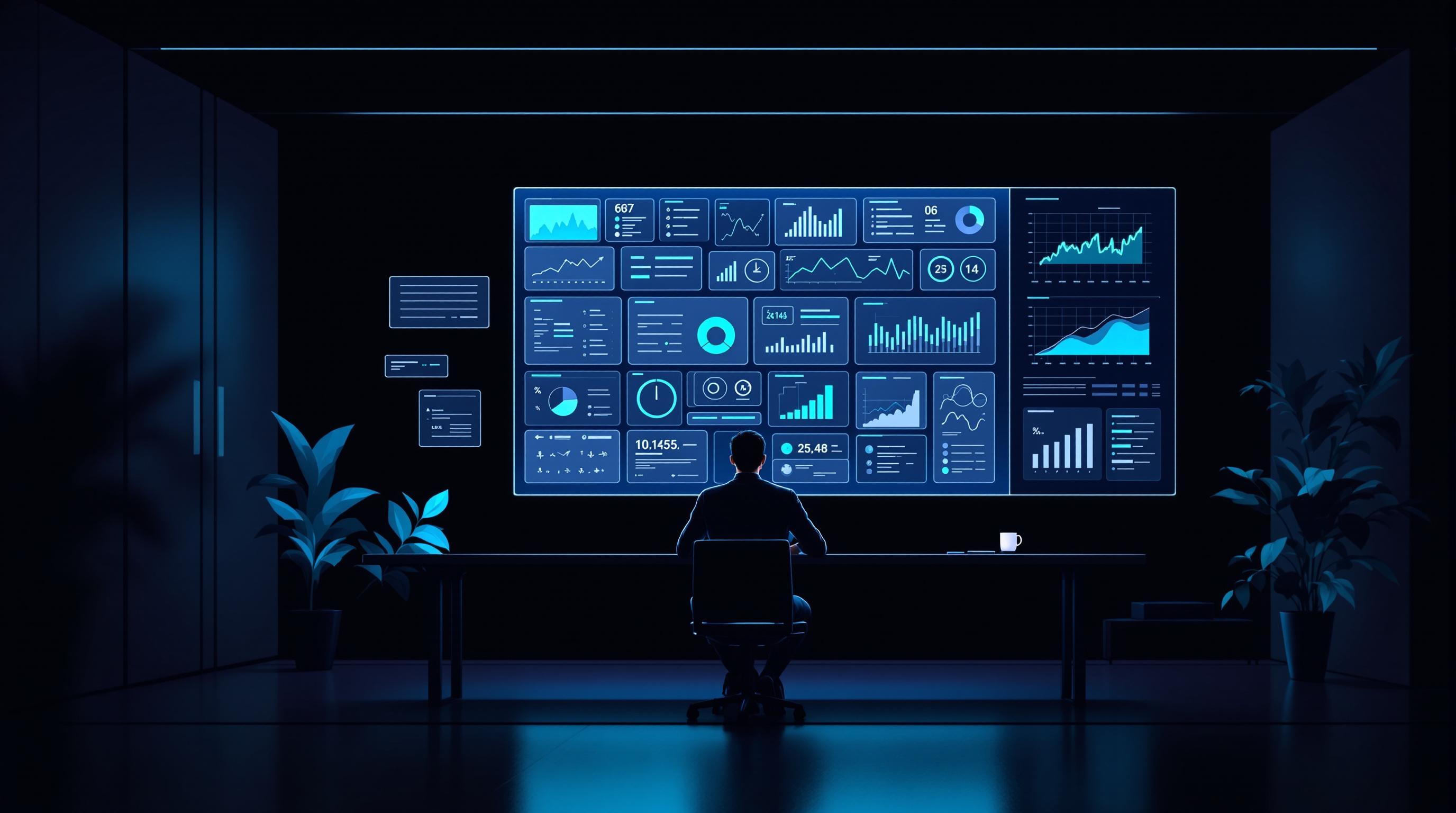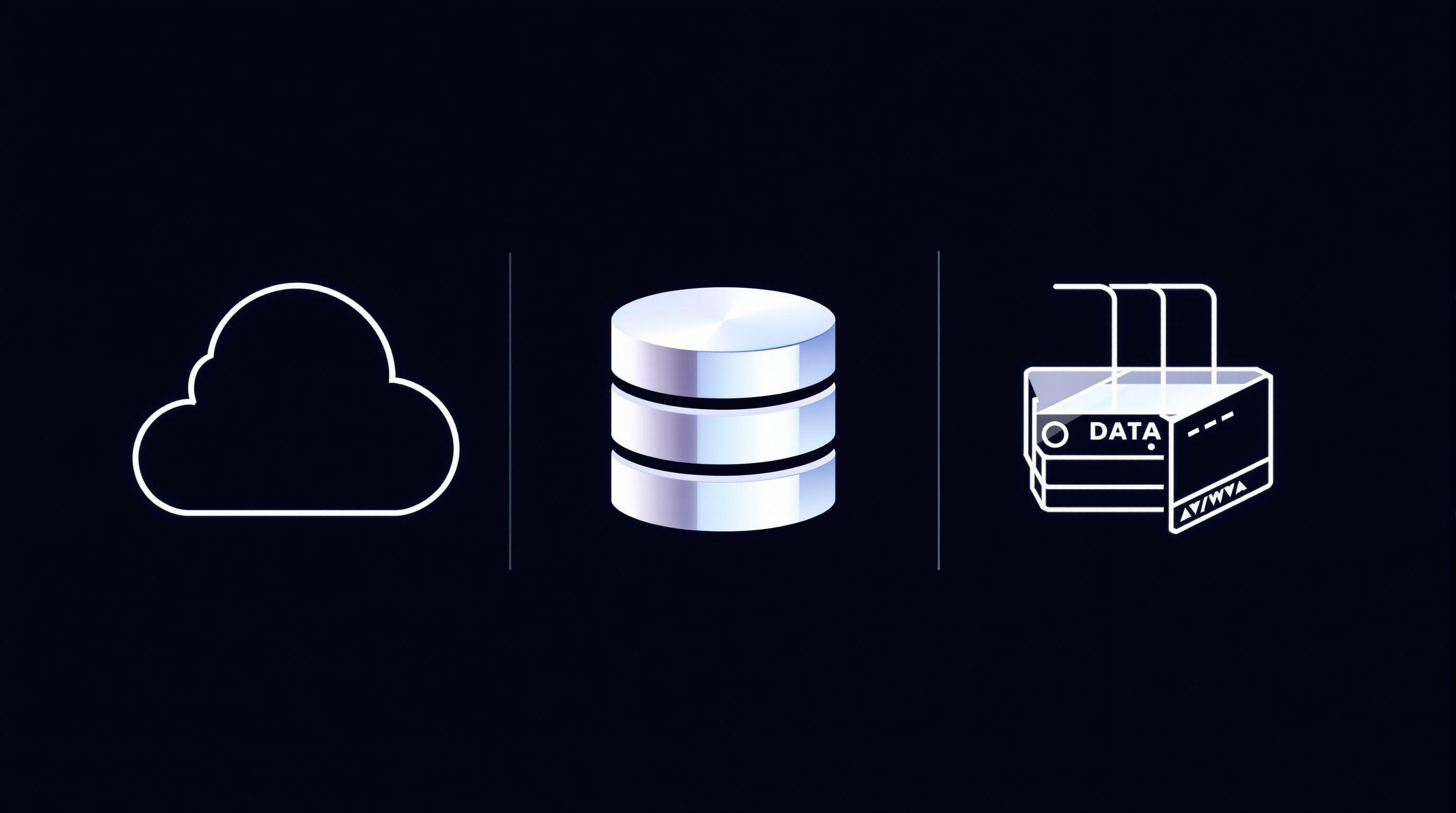Web scraping is transforming how artists and designers gather inspiration and track trends. By automating data collection from platforms like Behance or art galleries, you can save time, build organized inspiration libraries, and analyze real-time trends in design. Here's what you need to know:
- What It Does: Automates collecting visual content, like images, color palettes, and typography details, from multiple sources.
- Why It Matters: Helps track emerging trends, build a personalized library of ideas, and make informed design decisions.
- Tools to Use: Platforms like InstantAPI.ai simplify scraping with no-code setups, real-time analysis, and image extraction for $2 per 1,000 pages.
- Ethical Scraping: Respect copyright laws, check site permissions, and give credit to creators to avoid legal issues.
- Practical Benefits: Designers can spot patterns, improve project outcomes, and even analyze competitors' strategies.
Web scraping isn’t just about collecting data - it’s about using it responsibly to fuel creativity and stay ahead in the design world.
No-Code Pinterest API Data Scraping with HAR Files (Still Works in 2025)
How Web Scraping Improves Creative Work
Web scraping has reshaped how creative professionals gather and organize visual content, offering far more than just time-saving benefits. By automating the collection of design data, it enables creatives to make smarter decisions, spot patterns, and compile resources that elevate their projects. Let’s break down how web scraping simplifies the processes of collecting visual ideas, tracking trends, and building an inspiration library.
Collecting Visual Ideas
Web scraping is a game-changer when it comes to gathering visual content from multiple sources at once. Designers can extract project descriptions, images, and even author details from platforms dedicated to design, creating vast collections of inspiration in no time.
Instead of manually bookmarking projects or taking screenshots, web scraping allows professionals to save data in structured formats like CSV or JSON. These formats make it simple to sort, analyze, and integrate the information into tools like Google Sheets. With this organized system, designers can categorize and cross-reference visual elements, making their creative process smoother and more efficient.
Take the fashion industry, for example. Many companies now scrape data from fashion blogs, online stores, and social media platforms to track emerging trends and predict future styles. By analyzing this data, they gain a clear picture of what’s gaining popularity across different audiences and platforms.
Even recruitment gets a boost from web scraping. Creative agencies can automate the collection of portfolios, evaluating styles and skills to find candidates who align with their project needs. This data-driven approach ensures that new hires bring the right aesthetic and expertise to the team.
Tracking New Trends
Web scraping is a powerful tool for spotting trends, pulling together complex data from various sources with speed and accuracy.
The rising interest in web scraping reflects its growing relevance in creative fields. In fact, global search demand for web scraping skills has jumped by 53% over the past five years, showing that more professionals are eager to learn how to harness data for creative insights.
Building Your Own Inspiration Library
Beyond identifying trends, web scraping helps creatives build a dynamic, ever-evolving library of inspiration. By automating the process of collecting and organizing design content, professionals can maintain a resource that’s always up-to-date and packed with ideas.
To start, choose tools that suit your technical expertise - whether that’s a code-based library or a user-friendly, no-code platform. Once you’ve gathered your data, data warehousing techniques can help manage large volumes of content, while categorization ensures you can quickly find what you need. Many creatives, for instance, scrape art portfolios and categorize them by themes, styles, or mediums, creating an easily searchable hub of inspiration.
Of course, maintaining quality is key. This means carefully selecting sources, removing duplicates, cleaning up missing values, and standardizing your data. A well-curated library not only keeps trends at your fingertips but also serves as a reliable tool for making creative decisions.
Web scraping also supports competitive analysis. By examining what competitors are showcasing in their projects, creatives can refine their own strategies and identify opportunities to stand out. This approach helps uncover gaps in the market and areas where differentiation can shine.
Finally, building a robust inspiration library requires some technical know-how. Techniques like DOM parsing for complex HTML structures, regular expressions for structured data, and XPath for extracting specific elements are crucial for effective data collection. When paired with automation, these methods create a system that continuously gathers and organizes content, ensuring your inspiration library stays relevant and ready to fuel your next big idea.
Tools and Methods for Web Scraping
When it comes to creative research, the right tools and methods can make all the difference. Modern web scraping tools, ranging from no-code solutions to advanced APIs, simplify the process of gathering data, helping designers uncover insights with ease.
Using InstantAPI.ai for Data Extraction

InstantAPI.ai is a game-changer for creative professionals looking to simplify web scraping. Its AI-powered technology lets users customize the data extraction process to fit their specific needs. Whether you're hunting for design inspiration or tracking trends, this platform makes the process smooth and efficient.
Pricing is straightforward: $2 per 1,000 pages scraped. This pay-per-use model is perfect for freelancers and small studios that need flexibility.
What makes InstantAPI.ai stand out? For starters, it can automatically handle pagination, which is a lifesaver when scraping design portfolios spread across multiple pages. It also excels at image extraction, making it easy to pull visual content from design showcases, art galleries, and trend websites. Plus, the intuitive interface means you can set up workflows without needing to write a single line of code. And with real-time data analysis, you can spot emerging design trends as they happen.
The platform also offers customization options that let you pinpoint exactly what data to extract - whether it’s color palettes, typography details, project descriptions, or designer credits. This level of precision ensures your scraped data aligns perfectly with your creative goals.
Methods for Scraping Visual Data
Scraping visual data requires a different approach than text-based scraping. Tools that use AI-driven natural language descriptions make the process more accessible for non-technical users, while traditional visual scrapers offer straightforward interfaces.
Specialized techniques like color palette extraction, layout analysis, and typography recognition allow designers to focus on the key visual elements of a project. For instance, you can capture dominant colors in HEX or RGB, analyze grid structures, or identify specific fonts used in a design.
Another useful method is image metadata extraction, which gathers details like dimensions, file formats, creation dates, and embedded keywords. This information is invaluable for organizing large collections of visual inspiration and ensuring you're working with high-quality materials.
To maintain the quality of your visual data, stick to trusted sources. Established design platforms, reputable art institutions, and verified trend websites are excellent places to start.
These techniques - whether manual or AI-powered - set the stage for automation, making the data collection process even more efficient.
Automating the Scraping Process
Automation takes web scraping to the next level, turning it into an ongoing system that keeps your inspiration library up-to-date with minimal effort. By scheduling scraping tasks during off-peak hours, you can improve crawling speeds and reduce the risk of overloading website servers.
Start by clearly defining your data needs. Whether you're tracking color trends in fashion, monitoring new portfolios from emerging artists, or analyzing layout patterns in web design, having a focused goal ensures your automation runs smoothly.
To avoid being blocked by websites, use rotating IPs and proxy services. Many sites have anti-scraping measures in place, so proper proxy management is essential for long-term success.
Error-handling strategies can also keep your automation running smoothly. For example, retry failed requests, use proxies to bypass temporary issues, and ensure your system can handle websites going offline without breaking.
Maintaining data quality is another crucial step. Remove duplicates, address missing values by filling them in or discarding incomplete data, and use regular expressions to clean up formatting inconsistencies. This ensures your library remains organized and easy to use.
For larger scraping projects, consider using data warehousing to store and manage your collected data. A centralized system allows you to track trends over time, compare data from different sources, and generate insights that guide your creative decisions.
"In web scraping, ethical and efficient practices are the pillars of progress. Handle the data environment with integrity, privacy understanding, and an unwavering commitment to excellence. Web scraping best practices not only drive innovation but also shape a sustainable and responsible digital future." - Saurabh Bhardwaj, VP, Account Management, NextGen Invent
Ethical Guidelines for Web Scraping Art and Design
Using web scraping to gather creative inspiration comes with serious legal and ethical responsibilities. As the web scraping industry is projected to hit $5 billion by 2025[1], it's essential to approach this practice thoughtfully, especially when collecting visual content. Designers and artists must tread carefully to ensure they respect both legal and moral boundaries while maintaining their creative integrity.
Respecting Copyright and Usage Rights
Copyright laws protect most creative works the moment they're created, even if no copyright notice is displayed. This means that art, designs, photographs, and other creative content online are likely protected by copyright law. When scraping visual content, you're handling someone else's intellectual property, and misusing it could lead to serious legal trouble.
Start by checking the site's robots.txt file (accessible by appending '/robots.txt' to the URL). This file outlines what content the site owner allows to be scraped. Respecting these guidelines not only prevents conflicts but also demonstrates ethical behavior.
Additionally, always review the terms and conditions of the websites you plan to scrape. Many platforms, such as design portfolios or art galleries, have specific rules about how their content can be used. Some explicitly prohibit scraping, while others may permit limited use for personal purposes but restrict commercial applications. Stick to these rules and avoid overloading servers by scraping only what you need.
It's important to understand that fair use has strict legal limits. If you plan to use scraped content for client projects or other commercial purposes, consult a legal expert to ensure you're not violating copyright laws. Respect for copyright not only protects others' work but also helps you avoid unnecessary legal risks.
Protecting Your Own Work
As a designer or artist, you likely understand the importance of protecting your own creations. The same respect you want for your work should guide how you treat others' content when scraping.
To safeguard your portfolio, consider adding technical measures like watermarks, right-click restrictions, or CAPTCHA systems. While these methods aren't foolproof, they act as deterrents and signal your commitment to protecting your work.
Update your website's terms of service to explicitly address data scraping and usage policies. Clearly outline what is and isn't allowed, creating a legal framework to defend your intellectual property if unauthorized scraping occurs.
When conducting scraping activities yourself, use clear user agent strings to identify your scraper and explain its purpose. Being transparent about your actions builds trust and ensures you're operating ethically rather than in secrecy.
The consequences of unethical scraping are well-documented. Past cases have shown how improper practices can lead to financial penalties, reputational damage, or even bankruptcy for organizations that fail to follow ethical guidelines.
Getting Permissions and Giving Credit
Beyond respecting copyright and protecting your work, it's essential to seek permissions and credit the original creators whenever possible. The best approach is to ask for permission before scraping. While this might take extra effort, many artists and designers are open to sharing their work if approached respectfully. A quick email explaining your project and how you intend to use their content can foster goodwill.
"Our commitment to ethical data collection is not just about compliance; it's about setting a standard in the industry. We believe in harnessing the power of data while respecting individual privacy and promoting transparency." - Senior Executive, PromptCloud
If you do use scraped content, always credit the source. This includes acknowledging the artist's name, the website where the content was found, and the date of access. Proper attribution reflects professionalism and respect for the creative community.
For those planning to publish or share scraped data, such as in mood boards or trend reports, explicit permission from the content creators is a must. Always check the site's policies regarding republication to avoid overstepping boundaries.
"Ethical data collection requires transparency and consent. Content scraping bypasses these principles, as it typically occurs without the website owner's knowledge or permission. This raises questions about fairness and respect for digital property." - Jagdish Mohite, Principal Security Consultant at Akamai
When using scraped content commercially, the stakes are even higher. Stay compliant with copyright laws and ensure proper attribution. Legal battles, such as hiQ Labs vs. LinkedIn and Facebook vs. Power Ventures, highlight the complexities of scraping user data without authorization.
Finally, be mindful of how your scraping activities impact websites. Schedule scraping during off-peak hours and limit simultaneous requests from the same IP address. These small but considerate measures help preserve website performance and foster positive relationships with the creative community you're drawing from.
sbb-itb-f2fbbd7
Organizing and Using Scraped Design Data
Turning ethically scraped data into meaningful insights is where the magic happens. Raw data is just the beginning - organizing it effectively can unlock its potential to inspire better, more informed design decisions.
Organizing Scraped Content
The first step in making your scraped content useful is defining your goals. What design elements are you focusing on? How will this data fit into your creative workflow? Answering these questions will help you organize the data in a way that serves your needs.
For managing large volumes of visual content from multiple sources, data warehousing techniques can be a lifesaver. They make it easier to scale and access your data whenever you need a spark of inspiration.
Once you've gathered your data, it's time to clean and standardize it. This means removing special characters, converting data formats, and reformatting text for consistency. After that, categorize your data into distinct groups. For instance:
- Color schemes: Organize by mood or align them with industry trends.
- Typography: Sort by style and weight to make it easier to find the perfect match.
- Layout patterns: Group by grid systems or responsive design strategies.
This structured approach ensures your data is ready to be analyzed and applied effectively.
Analyzing Data for Trends and Ideas
With your data neatly organized, you can start analyzing it to uncover trends and patterns. This is where data storytelling techniques come into play, helping you connect the dots and see the bigger picture.
Visualization tools are particularly helpful here. Platforms like Tableau or Power BI let you create interactive dashboards that bring trends to life. If you're more technically inclined, Python libraries like Matplotlib and Seaborn can help you generate detailed plots. For example, you might discover patterns in color usage, typography preferences, or layout trends across industries.
The rise in demand for web scraping skills - up 53% in the past five years - highlights how valuable these insights have become in creative fields. To get the most out of your analysis, start with a clear hypothesis. Focus on specific challenges or opportunities instead of aimlessly exploring your data.
Pay attention to seasonal patterns in your findings. For example, a startup analyzing competitors’ reviews noticed that certain design elements resonated differently depending on the time of year. This insight allowed them to craft seasonal campaigns that hit the mark.
Using Insights to Improve Your Work
The goal of analyzing scraped data isn’t to stifle creativity but to fuel it. The best designers see data insights as starting points for inspiration, not rigid rules to follow.
To make the most of your findings, contextualize the trends you uncover. Ask yourself why certain design patterns work - this understanding will help you adapt the principles behind them rather than simply copying their appearance.
For instance, a consumer electronics company used scraped data to analyze product imagery and layouts on Amazon and Walmart. They found that visuals played a huge role in competitive positioning. By responding quickly to these insights, they fine-tuned their creative strategies and stayed ahead in the market.
Accuracy is key, so tools like Python’s Pandas can help you clean and merge data for reliable analysis. And don’t forget to create feedback loops - track how your data-driven decisions perform in real-world projects. This will help you refine your approach over time.
Finally, when visualizing your data, keep it simple and focused. Use charts that highlight the most relevant insights without overwhelming yourself with unnecessary details. This clarity will ensure you can extract actionable ideas without getting bogged down in complexity.
Scraped data is a tool to guide your creativity, not replace it. Let it inform your decisions while keeping your artistic instincts at the forefront. By balancing data-driven insights with your own vision, you can create designs that are both inspired and impactful.
Conclusion: Using Web Scraping for Better Design
Web scraping has become a powerful resource for artists and designers looking to stay ahead of trends and spark new ideas.
But with great tools comes great responsibility. Success in using web scraping for art and design hinges on finding a balance between creativity and ethics. As Vinod Chugani, a data science expert, wisely states:
"Ethical scraping is as much about restraint as it is about reach."
This mindset is essential for any creative professional relying on web scraping for inspiration. Respecting copyright laws, checking Terms of Service, and opting for APIs when available not only ensures compliance but also fosters respect for the original creators whose work sparks your own. Beyond legality, ethical web scraping helps you make smarter design choices, spot trends early, and better connect with your audience’s preferences.
For designers, web scraping offers opportunities to build inspiration libraries and track seasonal trends. However, it’s important to treat scraped data as a starting point for creativity, not a replacement for it. The best designers dig deeper, using the data to uncover the "why" behind trends and then reimagining those ideas into something fresh and original. This interplay of data and creativity is at the heart of great design - melding insights from the digital world with your unique artistic vision.
Looking ahead, the future of design will thrive on leveraging web resources responsibly while honoring the creative community that fuels these innovations.
FAQs
How can web scraping be done ethically while respecting copyright and usage rights in art and design?
Ethical Web Scraping in Art and Design
When it comes to web scraping in the realms of art and design, it’s important to tread carefully and responsibly. This means respecting copyright laws, intellectual property rights, and privacy regulations at every step. Always make sure the content you’re scraping is publicly accessible and not restricted by a website’s terms of service. Taking the time to review these terms is essential to avoid any legal missteps.
If you’re working with scraped data, steer clear of duplicating or redistributing proprietary content like images or designs without proper permission. Instead, use the data to draw insights or find inspiration, and whenever possible, credit the original sources. For projects involving personal data, it’s equally important to comply with privacy laws to uphold ethical standards.
By sticking to these guidelines, web scraping can become a valuable tool for creativity and exploration - without crossing ethical or legal boundaries.
What are the best methods and tools for collecting and organizing visual data to inspire design projects?
To collect and organize visual data for design inspiration, you can rely on web scraping tools like Beautiful Soup, Scrapy, or Puppeteer. These tools simplify the process of gathering images, design portfolios, and trend reports from various websites, saving you both time and effort.
To ensure your efforts are efficient, stick to smart practices like using proxies to prevent IP bans and double-checking the accuracy of the data you’ve collected. Once your data is in hand, make it easier to analyze by applying data visualization techniques. For instance, use clear charts and pair them with complementary color palettes to emphasize key trends. This approach not only streamlines your creative workflow but also helps you stay ahead of the latest design trends.
How can web scraping help designers find inspiration and stay ahead of trends?
Web scraping offers designers a treasure trove of insights to fuel creativity and stay ahead in a fast-evolving industry. By pulling data from various online sources, designers can uncover user preferences, spot emerging styles, and explore industry trends. This kind of analysis helps them craft designs that not only connect with their audience but also meet current market needs.
For example, gathering visual content or browsing design portfolios can ignite new ideas, while keeping an eye on competitor websites can highlight fresh trends and strategies. Additionally, studying consumer behavior and feedback provides the foundation for creating user-focused designs that address actual needs. In essence, web scraping equips designers with the tools to make smarter, data-backed decisions, ensuring their work remains fresh and relevant.


